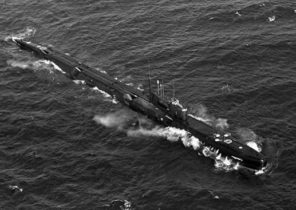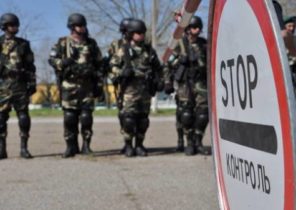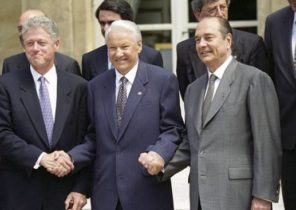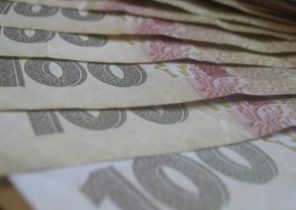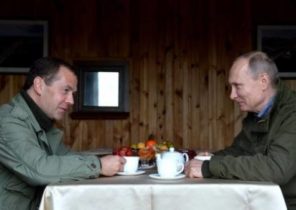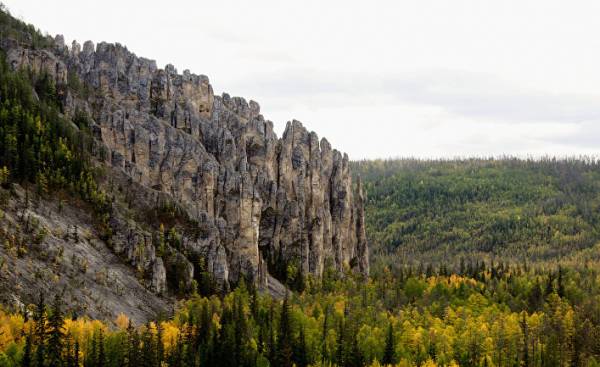
When 25 December 1991 over the Kremlin was lowered the Soviet flag and raised the old flag of Russia, it was received with glee as the collapse of communism. Many thought that the coming “end of history” and the emerging new world order, based on the principles of political democracy and economic freedom. But in the end the political system does not always lead to the death of the country that this system used. And in truth, the Soviet Union collapsed not so much because of the economic crisis or disappointment in the ruling ideology of communism, and because of the simultaneous attempts of republics to be sovereign.
Russian and Western scientists have acknowledged the role of separatism in the decline of Russia, but they rarely say that the colonial Empire of Europe in the process of disintegration went through the same thing. Russian experts do not even want to acknowledge the fact that Russia’s history is the history of colonization. One of the most influential Russian historians of the late nineteenth century, Vasily Klyuchevsky argued that Russian colonization is different from colonization pursued by other European powers, because “the history of Russia is the history of the country, which colonized. The area of colonization it has expanded along with its state territory. Then falling, then rising, is a secular movement continues to the present day”. Others point out that the Russians colonized does not “own land” and the lands of other peoples, and however, distinguish between them and other Europeans. As noted by the Russian philosopher Georgy Fedotov, “unlike all the Western powers, Russia was created not through violence, but through peaceful expansion, not by conquest, and colonization.” However, this country similar to the European Empire is much more than we think — and this comparison affects her future.
Colonial history of Russia
The history of colonialism in Russia is indeed quite different from all other colonial adventures, but not due to the fact that colonization was “peace” and “agreement”. This becomes obvious if we analyze the three ages of colonization.
The first era lasted from the XI to the XIV century, when they elevate the Moscow Principality, which became the ancient predecessor of Russia. From 1000 to 1150 A. D., the young princes of Kievan Rus founded the city which later became the nodal points of Muscovy: Vladimir, Suzdal, Ryazan, and Moscow itself. These colonies of immigrants gained strength, not only in the process of their own growth, but also because of the decline of the Kievan metropolis due to dynastic strife. Until the 1230-ies of this area, which later become “Russia”, called Suzdal Principality. It quickly expanded, extending from Tver to Nizhny Novgorod from Moscow to Veliky Ustyug. At that time, the Principality was larger than any European state, with the exception of the Holy Roman Empire.
In 1238 the Principality is destroyed by the Mongols, who later destroyed the remnants of Kievan Rus. They controlled the former Kyiv colony by force, forcing residents to pay tribute and supply soldiers in the Mongol army. However, they allowed some elements of self-government. I must say that this region (ulus) occupied a unique position in the Mongol Empire. Since the lands of the Moscow princes were not considered part of the Empire, they could easily change the local balance of power, concentrating in his hands the secular and religious power. Over time, in the Moscow Principality was formed “national” identity, and it threw off the Mongol yoke. So even at the very beginning of Russian history we can see two features that distinguish this country from the rest: 1) it developed as a colony of settlers belonging to another Duchy, and 2) a hostile force treated her like his property. Such a history no other European colonial Empire.
The second epoch is characterized by the fact that Russia followed the example of Europe, which engaged in colonial conquests. When Europeans in the beginning of XVI century began its overseas expeditions, the Muscovites began their expansion in the Northern and Eastern direction. To 1502 they seized the land of the Ugric peoples, and in 1520 took Ryazan. In 1552, Moscow conquered the khanate of Kazan, and in 1556 the Astrakhan khanate. In 1557 she put an end to the Great Nogai Horde, and in 1582 captured the Siberian khanate. At the time these seizures are approximately the same as the Spanish conquests in Central and South America: in 1496 Haiti, in 1508, Cuba and Puerto Rico, in the years 1519-1521 New Spain, in the years 1535-1536 Peru and Rio de La Plata, and in 1565 to Florida. But the Russians have taken a much larger territory, extending its Drang hach Osten and in the next century. By 1610 they had captured Piebald Horde, reaching the Yenisei river, and by the mid-seventeenth century came to the border with China. To 1689 Moscow conquered the whole of North-Eastern Eurasia all the way to the Bering Strait.
Soon to the Spaniards and Portuguese joined other European powers, and the division of America, and the British spearheaded the campaign in the North-East shores. But Russian they are not lagging behind. The first Siberian city appeared almost simultaneously with the us: Tobolsk (1587), Surgut (1594), Tomsk (1604) and Krasnoyarsk (1628) a little older than Jamestown (1607), new York (1624) and Boston (1630). Russian Siberia was as much a colony as New England, Quebec, Australia and New Zealand. As the economist Angus Maddison (Angus Maddison), all these territories were “Western branches” of their Metropolitan areas, as the colonists numerically far superior to the indigenous population. (A significant portion of this population was, of course, destroyed. And when some local tribe began to rebel, Russian pioneers usually have killed up to half of its members.)
Russian has achieved outstanding success in the colonization of Eurasia, because colonists they had been for many centuries. After the Mongol rule, they also adopted the methods of their oppressors. According to one estimate, if we talk about the General subject Moscow area, Russian Empire was the largest and most durable of all existing empires, far ahead of the British and the Roman Empire.
But fast forward a couple of centuries forward, and we will see a striking similarity between Russia and other European powers. Having exhausted the reserves of the colonists, they decided on an adventure of a different kind, relying solely on military superiority. They took control of vast new lands without a mass resettlement of people. This time the expansion went to the East and the West, and South. The second half of the nineteenth century, Britain conquered a large part of Africa, India and Malaya. The French controlled Indochina, West Africa and parts of the Middle East. Their example was followed by the Dutch, the Portuguese, the Belgians and even the Germans. By 1885, the deed was done, and the parties all issued officially, signing the Treaty of Berlin and divided among themselves Africa. At the same time, and the Russians moved in a southerly direction, and came to the third period of colonization. In the period from 1804 to 1810, the Empire engulfed the whole of Georgia, Abkhazia and Armenia, and by 1859, she completed the series of wars with the North Caucasian peoples. In the period from 1864 to 1876, the Russian Empire occupied Bukhara Emirate and the Kokand and Khiva khanates, coming to the foothills of the Hindu Kush. This ridge was the only barrier between Russian and British territories.
These new ownership (the European in Africa and South Asia, and Russian in Central Asia and the Caucasus) cannot be considered colonies because there were very few colonists. In 1898 the British Empire guarded and defended a total of 120 thousand soldiers and civilian personnel in Britain was even less. The same can be said of the Russian territories in the South. By 1897, the share of Russian in the Syrdarya region was 2.1% of the total population, currently at 1.4%, and in Fergana only 0.5%. Therefore, we need to distinguish between colonies that are territories seized by the European powers, and subsequently populated mainly by Europeans, and dependent territories that have been forcibly subordinated to the power of the Europeans and controlled by them without the mass migration of people from Europe. This will help us to structure our analysis.
The European powers have staked on the creation of dependent territories only when they lost their colonies. In the late XVIII and early XIX centuries there began a series of riots and then revolution, and this led to the Department of overseas colonies to their empires. It should be noted that the nature of such separation highlights the difference between the colonies and dependent territories. The war for independence in the United States and uprisings in Latin America did not arise from rejection of European values and principles; on the contrary, the colonists adopted the political traditions of their mother countries. They just wanted to build their own “city on a hill” in accordance with European ideals. Thomas Jefferson and Francisco de Miranda, Benjamin Franklin, Simon Bolivar, Alexander Hamilton and Jose de San Martin — they were all big “European” than the proponents of absolutism in Europe. In contrast to the earlier period of separatism, what would later be called “decolonization” 1940-1970-ies (will be called a mistake, as these territories were not colonies, and were dependent countries), is a natural consequence of the struggle of indigenous people against foreign military domination and the imposition of alien cultural traditions.
But here the patterns are not the same. The fact that the Russian colony Siberia never rebelled. In its relations with Russia, which were in many ways similar to the relationship of Europeans to their colonies, there were some very important differences. In Siberia pasted the shortcut of the colony because she was brutally exploited for centuries (it gave Russia’s most valuable export goods, from furs and gold to oil and gas), but actually, it was tightly connected with the historical Muscovy. The Embassy of the order ceased to supervise over it in 1596, and after that Siberia began to assume a distant but integral part of Russia. In addition, unlike the Europeans, the Russian rulers were not interested in the establishment of the influential regional elites. (The first Siberian University was founded in Tomsk in 1878 and opened its doors to 242 years later, the Harvard University founded in the Massachusetts Bay colony.) For these and other reasons, Siberia has never tried to secede from Muscovy, and the Russian began its expansion to the South, not having lost colony settlers. As a result, most European powers had either colonies or dependent territories, and Russia simultaneously was both the first and second that made it unique.
In short, the Soviet Union inherited a complex history in which Russia was the oppressor and colonizer, and at the same time, enslaved and colonized the country. Given the patterns of European history and General social trends such reincarnation of the greatest Empire in the world had little chance to survive until the XXI century. But even today in the Russian Federation and abroad do not understand very well the lessons of the Soviet collapse.
The Collapse Of The Soviet Union
When in the 1920s, Russia became the Soviet Union, the old Imperial legacy merged with the new Communist ideology, and each of them had their own period of domination. Memories of Empire forced the Soviet leaders to fight for the revival of “old Russia”, which they again took control of Central Asia and in 1922 restored the authority of the Central government over the greater part of the Imperial territories. It also led to a reconciliation with Germany in 1939, after which he was promptly “liberated” Western Belarus, Western Ukraine and Bessarabia, and in 1940 joined the three Baltic States. The inclusion of the Soviet Union semi-Tuva Republic in 1944 and East Prussia in 1945, became the last territorial acquisitions of the Soviets, after Moscow initiated the formation of puppet States throughout Central Europe.
But because of their Communist aspirations, she was forced to lavish praise on “national liberation movements” that led the struggle for the dismantling of the Western empires. The Soviets believed that such movement will facilitate the creation of new States inevitably will choose the “socialist path” as the only viable strategy for their independent development. But if American foreign-policy establishment was a good reason to support self-determination (particularly where it could hurt the British), then the Advice in this respect was much harder. In the Constitution, each Soviet Republic was said that she may withdraw from the Union for any reason, because it is an inalienable right of sovereign States. In 1944, the Soviet government reaffirmed their right to sovereignty, allowing the two republics, Ukraine and Belarus, to be founders and members of the United Nations. I must say that very different regions of the former Russian Empire have equal rights as quasi-sovereign States only in the Soviet Union. Given the fact that in these republics there was a high probability of a separatist movement for secession, the Declaration of the Soviet Union Federation was a very bold step, not to mention the boost of the former possessions of the Western empires to fight for full independence.
Despite this, the Soviet Union managed to survive all the other colonial empires of Europe, who began to abandon their dependent territories after the Second world war. But since the downturn in the Soviet economy lasted, and political reform was inevitable, the old conflicts came to the surface with the new, immense power. Democratization connected with the desire of the republics for a new national identity. Even the collapse of the Soviet Union is rooted in the complicated colonial past of Russia, and it continues to influence the post-Soviet device, and politics of the country.
As noted above, the Soviet Union was created from the colonies and dependent territories. This has caused a new phenomenon, which is sometimes called the “semicolonial”. In this system, the colonies gain weight and position at the expense of the center. During the collapse of the Soviet Union, Russia was not a classic metropolis trying to save your project, but that are failing. Rather, she contributed to the dismantling of the Soviet Union. It was a unique case where the periphery has teamed up with the center to destroy the plane, common to the Empire, considering that it does not meet their interests.
Such an unusual partnership became possible because Russia was afraid of what never was afraid of the European powers: that the Russian nation dissolves into some larger “people.” The European empires of the twentieth century were geographically and politically separated from its overseas dependent territories and have not experienced the tremendous influx of people from these regions. By 1950, the British Isles lived less than 20 thousand “colored” residents originally from other countries, and in the Netherlands and Belgium the figure was even lower. The only exception was France, which formally included in its membership three Algerian territory Oran, Algiers and Constantine. But their population of about 2.2 million, increased the proportion of the population of France is not French origin is only five percent. In contrast, the USSR was a politically country, bringing together neighboring areas. According to the last census in 1989, Russians accounted for only 50.8 per cent of the total population of the Soviet Union. Further, the structure of the Soviet Union downplayed the role of the Russian national community and sovereignty. The Communist party of Russia was created only in June 1990, when in each Soviet Republic had already been formed their own Communist party. The Russians believed that dissolving the Empire, they retain their national identity. Paradoxically, the same motivated and their “subjects”. So the Soviet Union became the only Empire that destroyed her former home, and not rebellion and strife on the periphery.
If getting rid of the dependent territories Russian considered appropriate, the collapse of the Soviet Union meant to them was more painful divorce — the separation of Ukraine. This country can hardly be called a Russian colony or a dependent territory because it was part of Russia for many centuries, becoming a center of industrial and business activity. Even the word “Russia” in its modern sense came from the middle of the XVI century, when Muscovy has included Ukraine in the composition of his single state. With the departure of Ukraine on “historical Russia” was dealt a blow of unprecedented force, as if she was back in the old Muscovy. Zbigniew Brzezinski once shrewdly noted that “without Ukraine, Russia ceased to exist as a Eurasian Empire.” Russia was ready to give freedom to its dependent territories; but the outside world believed Ukraine one of such areas, but because of long-standing and strong ties, which made Ukraine an integral part of Russia, its loss became for Moscow a devastating blow. For this reason, the Russian leadership began the intervention at a time when the divorce had come to seem irreversible, starting in 2014, the war between the “brotherly peoples”. When the Russians look at Ukraine, they think not only about the 1980-ies, but also on 1080-earlier period. They remember the colonial past, not a Communist.
The loss of colonies, makes the Soviet Union unique among the European colonial powers by the nature of its collapse, but there is another factor. She kept her giant, resource-rich colony even after its possessions went (or were simply abandoned.) I must say that from the loss of colonial possessions, Russia has suffered only minor economic damage. The combined GDP of new Russia’s neighbors in post-Soviet space is 540 billion dollars (according to IMF estimates for 2016), and the Russian GDP is estimated at 1.27 trillion dollars. The income per capita in Russia is higher than in all former Soviet countries except the Baltic States, which today is part of the European Union and the Eurozone.
After the withdrawal of Soviet republics, Siberia became not just more important for Russia. It has evolved into its economic value. The territory East of the Ural mountains accounted for 52% of the land of the Russian Empire, 7.5% of the population and 19% of exports (as of 1897). In 1985, these figures rose to 57, 10.5 and 46%, respectively. In 2014, the colony had occupied 75% of the country, there were 20.5% of its population, and she gave 76-78% of national exports. If Siberia today will stop supply of raw materials export from Russia will be less than that of Hungary. And since more than 55% of Federal revenues Russia obtains from the use and export of natural resources, it was in the unique position of living at the expense of the colony of settlers who are still poor and underdeveloped. Picture this: the 13 American colonies did not separate from Britain, and Brazil of the XIX century decided to remain part of the Portuguese Empire. Center of Russia depends on its colony of settlers is exactly the same as today’s United Kingdom would depend on the US, today’s Portugal or from Brazil.
Unfortunately, Russia is currently spending energy to fight with Ukraine and care of former dependent territories, instead of to protect the most valuable wealth. It should abandon its post-Imperial designs, stop reopening old wounds and focus on creating a balanced and well managed internal structures, which will give its colonies the impact it deserves. If Russia will continue to consider this problem unimportant and secondary, it will have a very uncertain future.
Today’s risks
Born in 1992, the new Russia has inherited from the Russian Empire and the Soviet Union conflict with its constituent parts and neighbors. This is the biggest problem for the country, and it is much more serious than dependence on natural resources or the reluctance to adopt democratic forms of government.
First, have left Russia dependent territories hamper the development of its economy. These areas, including most of the North Caucasian republics, cut off and alienated from the mother country, and live there are too few Russians to tie them to the center. At the end of the Soviet era Russians, Ukrainians and Belarusians was 24.3, 9.3 and 8.5% of the population of the Kirghiz SSR, Uzbek SSR and Tajik SSR, respectively. Today these figures are for Dagestan only 3.6%, Chechnya 1.9% for Ingushetia of 0.7% and they are constantly declining. But these republics officially part of the “one and indivisible” of the Russian Federation. Moreover, the current dependent territories exist almost exclusively on grants from the Central government (share of local taxes in the budget of Dagestan is only 26.7%, in Chechnya, to 26.1%, and in Ingushetia 22,2%). Despite all efforts of the Kremlin, the average income of the population in these republics increased only to 74.3, up 61.2 and 41.6% from the average for Russia.
To pump more money into the Federal budget, the Russian leadership has continued the economic exploitation of Siberia. The overall share of regional tax revenues coming in Siberian regions, decreased from 51% in 1997 to less than 34% in 2014. The Central government not only imposes new taxes and fees, but also creates a state Corporation who work in Siberia, with head offices in Moscow and St. Petersburg, where they pay regional taxes. Therefore, the gross regional product of Moscow and St. Petersburg exceeds the gross regional product throughout the vast area from the Urals to Sakhalin and Kamchatka. Formally, the Russian statistics considers that in 2016 the share of the Siberian Federal district in the total national exports amounted to only 9.2 percent, since the official “exporters” are the Moscow company. There is an impression that all Russian gas is extracted only within the Moscow ring road. Because of this exploitation of Siberia chronically suffers from lack of investment and the standard of living of its population steadily low. Fixated on “national unity” and “territorial integrity” and all the forces holding the remainder of her dependent territories, Russia risks losing, or rather to destroy their colony.
The new Russia also suffers from the state system of the Soviet type, has acquired even more ambiguous form. The Soviet Union consisted of 16 formally equal republics, most of which was divided into regions. It was a multinational Federation, where each member had the right to secession. Today Russia is officially a Federation, which can be taken and new territorial formations (the Crimea in 2014, and possibly in the future, South Ossetia and Donbas). The regional governors, selects the Kremlin, after which they choose for the bogus elections. But the biggest problem is that today in one state, there are two dozen national “republics” and about 60 predominantly Russian areas. No country in the world is not such a strange and potentially explosive territorial structure: a single region, called the Federation, and many smaller areas. “National” names of the republics also disguise them very ethnically diverse, since the “titular” peoples represent a very different percentage of the total population. In Chechnya the figure is 95.1% in the Komi Republic of 22.4%, and in the Khanty-Mansi Autonomous district total of 1.96%. Because the Russians are as much as 82% of the total population, the Federation looks like a mono-ethnic state is divided into artificial “national” education, which is a pure product of the Soviet legacy. The Russian Empire, unlike the Russian Federation, consisted of provinces that had no ethnic and national features. If you do not alter the current system, Russia’s future remains uncertain, and many will make predictions about when and how this country will split into parts.
Together with the political restructuring of the new Russian state has undergone tremendous changes in the composition of the population. After the collapse of the Soviet Union in the most extreme cases of people openly expelled or squeezed out gradually from the dependent territories (as it was in countries that have received full independence, like Kazakhstan and in the republics formally remain part of the Russian Federation (Chechnya)). In the period from 1989 to 2009, when the outflow of the Slavic population is almost completely depleted from the former Soviet Caucasus and Central Asia left, at least 4.3 million Russians, Ukrainians and Belarusians. The number of Slavs in Kazakhstan for these years decreased from 44.4 to 26.2%, in Kyrgyzstan from 24.3 to 6.9%, and in Tajikistan, from 8.5 to 1.1% of the total population. Unlike Russia, the Exodus of the French from Algeria, which became the largest migration flow in the struggle against European domination, touched 860 thousand people.
This was a serious trauma for the psychology of Russian. They created the concept of “Russian world”, which implies that the Russian people living around the post-Soviet space and worldwide, is in need of reunification. The Russian political leadership to actively promote relations with the territories of the former Soviet Union. Since politically such reunification is not possible, the Kremlin today thinks primarily about economic integration, which Russia is forced to spend tens of billions of dollars in grants and loans to the former Soviet republics. It does not bring any profit and benefits to the Russian economy, as the economies of post-Soviet countries are small and underdeveloped, and like Russia is very heavily dependent on energy exports.
Long before the spat between Russia and its most dependent partner of Belarus, I called the Eurasian Union “useless toy of Putin”. Today, this toy is not just useless, it’s dangerous. Due to the inability of modern Russia to focus on my own Affairs, but also because of its attempts to cross national borders for the sake of living abroad compatriots, there is a risk of political confrontation along Russian borders and more remote areas. We can witness many surprises will disappear before the Russian nostalgia for the colonial past, which is her biggest drawback.
The Future Of Siberia
Now, when the former dependent territory of Russia are gone or have lost their value, it is necessary to shift attention to their biggest asset, which is a colony of immigrants Siberia. The transformation of “the Siberian curse” in the “Siberian happiness” in the coming decades should be an important goal for the Russian state. But this region should not to develop; you just have to give him the opportunity to develop itself, as do endowed with rich resources of the colony.
Today Russia needs to develop the private sector, balancing it with the state. The best way to accomplish this task is to give the residents of Siberia’s unique entrepreneurial freedom. This does not mean that it is necessary to privatize huge state-owned corporations operating today in the region. You just have to loosen state control over economic activity, giving people the opportunity to buy land for personal use; it is necessary to invest in infrastructure, to build roads, Railways, airports. It is necessary to develop new oil and gas fields and other mineral deposits. All prosperous colonial territories of European — American West, Canada, Alaska, Argentina, Australia and South Africa — has evolved, not by government efforts, but due to the enthusiasm, ingenuity and courage of the colonists. Russia should turn the entire territory of Siberia and the Far East free economic zone without many of the taxes and rules that the state imposes for business. And it should be free economic zones, not just in name, because the state has already created such entities, but they all failed, because in reality were not open and free. The Siberian area must have access to foreign markets, as it is close to seaports, and it is necessary to provide incentives for the development of modern industrial enterprises. The fact that Moscow will lose tax, it will be compensated in the form of long-term economic profit.
For growth in Siberia, Russia should promote local and foreign investment (more importantly) investment in the colony to ensure the highest possible standard of living of the population. History remote and resource dependent territories shows that their inhabitants have a standard of living is usually higher than the national average. Otherwise, these regions would not be natural profit of the population, and there would not be anybody traveling from other places. For example, there is a marked difference between the average income in Alaska (73 400 dollars) and the USA (55 $ 700). The same can be said about the North-West territories of Canada where the average income of 112 400 canadian dollars to very decent looks against the average indicator in the country (78 $ 870 in 2014). And in Western Australia the average family income in 72 800 Australian dollars exceeds the national rate of 66 820 dollars (in 2008). Russia is an exception to this rule: the average monthly income in the Siberian Federal district in 2015 was 23 584 rubles, while the national average it was equal to $ 30 474.
Ways to attract investors should be very simple: the Russian government may issue a free license for development and extraction of natural resources in the region provided that they will not be exported, and will be processed in the final industrial product in the region. Domestic prices for many natural resources in Russia is low, and therefore such a scheme, combined with tax exemptions could attract large multinational corporations. With their appearance in the region will accelerate growth and improve living conditions. An example of this was the island of Sakhalin. Such firms as Exxon, RoyalDutchShell, Mitsubishi and Mitsui since the mid 1990-ies involved in the exploration and development of oil and gas deposits under the scheme of section of production, and thus the island went from 19th to third place in the country in terms of gross regional product per capita.
In addition, Russia should rethink the role of its Eastern regions in a big geopolitical game. The Kremlin is fixated on its relations with China, including Beijing as its main ally in opposing the West. But today, the Alliance with China less profitable for Russia than before. It requires the creation of massive fixed infrastructure, which can only be used for trading with China and no one else. In such conditions, Russia is in the position of exporter of resources, because China, being the world’s most powerful industrial power, is not interested in helping its Northern neighbor in the industrialization. And since China never worked up North, he has no experience of successful implementation of projects in the harsh Siberian conditions. It is not surprising that Russian-Chinese cooperation over the construction of new facilities for the extraction of raw materials to the Russian side of the border and modern industrial enterprises on the Chinese side.
It would be much cheaper to develop ties with Japanese and Korean companies, which act as major investors, as well as with canadian, American and even Australian companies that can provide the necessary expertise and experience in sustainable socio-economic and environmentally sound development of these vast and resource-rich regions. Strengthening ties with these countries will also reduce geopolitical risks, as Russia should be wary of Chinese attempts to “recolonization” of its territory, since Beijing has already moved there a large number of its citizens, and this flow will increase if there is additional investment. You can disagree with the fact that the Russian Far East need immigrants; but it would be much better if they came from different, even competing countries, and if who supply most of the migrants, the country would not at the same time most of companies working in the region. Thus, if Russia wants to develop its Siberian colony with minimal risk, she has no alternative but cooperation with the countries of the Pacific.
Having Siberia, Russia became a continental power, and much earlier than the United States. But if the Americans successfully and quickly developed their Pacific coast, making California became the largest US state by population and gross regional product, that Russian considered their far East just a military Outpost in the unimportant part of the world. Today, Russia must form the same structure, some more than 100 years ago created the United States. She needs to develop if there are two “bases”, two “edges”: one emerging in Europe and the Atlantic, and the second, looking East towards America and the Pacific.
As argued by Samuel Huntington (Samuel Huntington), the colony is a “settlement, built by people leaving their homeland and traveling to other places to create a new society in a remote area.” This definition is very different from the meaning of the word “colony” in the sense that it is given in the last time, referring to the territory and its indigenous people that are managed by the government of another nation. The term “colony” comes from the days when colonization was the most common way of exploring new territories without their direct conquest. The colony was not so much an Outpost for military expansion as “trade missions” that have created the most developed countries. According to various estimates, from X to VI century BC the Phoenicians founded more than 200 settlements with a total population of over 450 thousand people throughout the Mediterranean and even the Atlantic coast of modern Spain and Morocco. The Greeks from IX to V century BC have created about a thousand colonies from the Black sea coast to Gibraltar, and at the peak of their development there were more than half a million people. In remote areas a new policy is sometimes created even in partnership with the local tribes. All these cities are preserving and developing cultural, social and political traditions of the regions where they came from their founders, and maintained close ties with them.
Although Russia along with its European neighbours in the XV century on the path of territorial expansion as a means of development, she later half of the Millennium remains the only great power that has preserved a giant colony of settlers. Many of those who saw the Siberian vastness and wealth, believe that this land can become the greatest treasure of Russia, unless Moscow recognizes its real value. In the interests of Russia and the West to develop the Eastern regions of Russia, creating another line of the Western military presence along the Pacific ocean. If we correctly understand the colonial nature of the Russian East, we will see that Russia and the United States, which are products of European culture and European policies, in fact, can develop sustainable partnerships and strengthen its presence on the Pacific coast. If Russia does not understand this and not protect its own periphery, it cannot become a successful country of the XXI century. What’s worse, she can go by the old European empires, creating a crisis comparable to the crisis of the early 1990-ies.
For centuries Russia was a country trying to expand its territory at the expense of neighboring lands. There is no shame — after all, the Americans are proud of their ancestors who have transformed the extensive land into a modern and prosperous country. The Russians need to re-think their past and present in order to successfully meet today’s challenges. They should forget their dependent territories and to concentrate on the huge colony, which, under the skillful management may again elevate Russia to occupy a worthy place among the most powerful and influential countries of the world.
Vladislav Inozemtsev — research fellow, School of advanced international studies, Johns Hopkins University.
